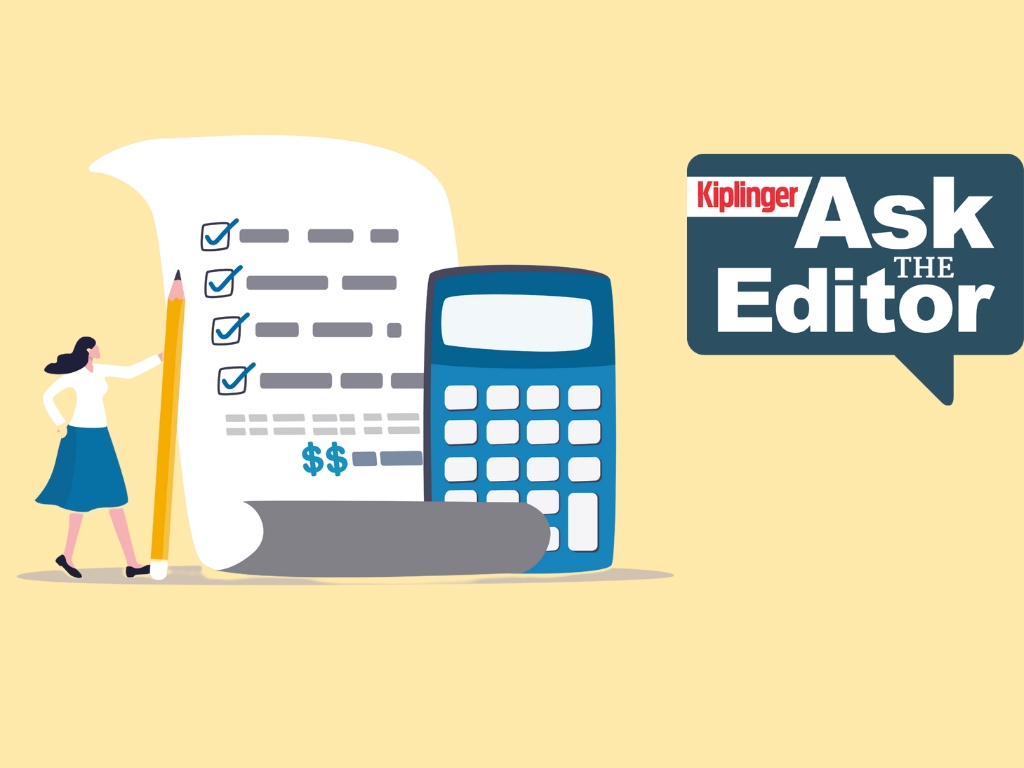Exchange Traded Funds: A Primer
ETFs typically come with low expenses, but you need to separate good deals from risky choices.

This article appears in Mutual Funds 2010. Buy this special issue.
While the mutual fund may be Americans' investment vehicle of choice, a similar type of investment -- the exchange-traded fund -- is coming on strong. New ETFs are appearing at a rate of one a day. You can now choose from among 750 ETFs, and their total assets are approaching $1 trillion.
As with mutual funds, quantity doesn’t mean quality. But ETFs have some advantages you should consider. The main advantage of ETFs is cost: ETFs typically hold expenses down, which means more money in your pocket.
From just $107.88 $24.99 for Kiplinger Personal Finance
Become a smarter, better informed investor. Subscribe from just $107.88 $24.99, plus get up to 4 Special Issues

Sign up for Kiplinger’s Free Newsletters
Profit and prosper with the best of expert advice on investing, taxes, retirement, personal finance and more - straight to your e-mail.
Profit and prosper with the best of expert advice - straight to your e-mail.
The first ETF available to U.S. investors hit the market in 1993 as a quick way to buy and sell Standard & Poor’s 500-stock index. Now, ETFs exist for every imaginable investment category -- from something as narrow as a single commodity (such as timber) or a single industry (such as health care) to something as broad as the complete domestic blue-chip stock market.
Most ETFs cover familiar categories, such as growth stocks or Treasury bonds. A few, though, are quirky. Some track nanotech¬nology companies and other ridiculously thin slices of the market. However, the largest group of new ETFs consists of income funds that invest in Treasury, corporate, muni¬cipal and foreign-government bonds. These ETFs can be a great deal for investors looking for broad diversification in income-producing investments at a low cost.
Below we compare the similarities and differences between ETFs and mutual funds. TAKE OUR QUIZ to see how much you know about ETFs.
Minimum purchase. Traditional mutual funds come with investment minimums -- often $2,500 or more -- but you can buy ETFs for much less. For example, a share of SPY, an ETF that tracks the S&P 500, costs about $110. Many others sell for much less. Of course, you have to pay a brokerage commission when you purchase an ETF, so it would be expensive to buy a small number of shares. (For example, a $10 commission on a single $40 ETF share would immediately put you 25% behind.) But ETFs allow you to avoid the often-high minimums of mutual funds.
Holdings. Typically, an ETF holds a basket of securities that track the performance of a specific stock index, bond index or other benchmark. So ETFs are much like traditional index mutual funds. ETFs cover all the stock, bond, real estate and other investments that make up complete portfolios.
Pricing. An ETF’s share price changes throughout the trading day, like a stock’s. By contrast, a mutual fund’s price, or its net asset value, is set only once a day, after the market closes. That means it’s possible to benefit from buying or selling an ETF on the dips and peaks of the day, instead of placing an order and then hoping for a favorable price when trading closes. However, such trading is a risky business that’s best left to professionals (who often lose their shirts doing it).
Costs. Because most ETFs follow indexes or simply own the major companies in a particular sector, they are cheap to operate. They don’t have a large staff of managers and analysts, as do many actively managed mutual funds. So the expense ratio of a typical ETF that invests in large growing companies, such as iShares Russell 1000 Growth Index, is a mere 0.20%. That means for every $1,000 you have invested in the fund, you pay just $2 in expenses annually. Actively managed stock mutual funds usually charge more than 0.75%, and often well over 1%. Even traditional index funds usually charge more than ETFs.
Taxes. ETFs are tax-friendly. That’s because ETFs have lower portfolio turnover than regular mutual funds and distribute fewer capital gains. (Many ETFs don’t pass along gains at all because they never change investments.) Although that doesn’t matter if you hold an ETF inside an IRA or 401(k), it will boost your return in a taxable account.
Tracking errors
But some ETFs have problems. One is when an ETF fails to track its index or benchmark. For example, a tracking error can occur when a commodity ETF, such as U.S. Oil Fund (symbol USO) or U.S. Natural Gas Fund (UNG), doesn’t own the actual commodity. Instead, the fund attempts to track the commodity’s market price by trading options and futures -- an inexact science that can be subject to the crosscurrents of the markets.
We think it’s better to find a commodity ETF that actually owns the commodity in question. Alternatively, choose ETFs that buy shares of leading members of the industry. Then you won’t have to worry about tracking.
Some ETFs use leverage, or borrowed money, to return two or three times the price movement of an index or benchmark. Tracking errors occur here, too. For example, while the stock market is up 60% from its bottom, none of the ETFs labeled 3X have made three times that gain (although a few have managed to rise more than 100%). These ETFs are pitched to short-term traders; they’re not for long-term investment plans.
10 Common ETFs you need to know
Most ETFs’ names are lengthy and sound like a regulation or a document. But many have clever three- or four-letter trading symbols, which is how most investors refer to them. For example, CUT is a lumber ETF. (Such names aren’t always so straightforward -- for example, XLK is an ETF that follows tech stocks.)
SPY (Standard & Poor’s depositary receipts) is the largest ETF. It tracks the S&P 500.
GLD owns gold bullion stored in bank vaults. With the soaring price of gold, it has become the second-largest ETF.
JNK holds high-yield “junk” bonds and pays interest every month.
IGOV gives you short- and intermediate-term government bonds from wealthy countries, such as Japan, Germany, France and Canada.
QQQQ (cubes) are interests in the 100 largest stocks listed on the Nasdaq Stock Market. It’s mostly invested in tech, but it also has a slug of health stocks, as well as companies in a few other sectors. It excludes financial stocks.
JXI invests in the largest electric, gas and water utilities around the world and pays a high monthly dividend.
LQD is a fund of high-grade U.S. corporate bonds. It pays interest every month.
DVY invests in the 100 highest-yielding stocks in the Dow Jones U.S. index, which leads it to a heavy concentration in utility and consumer goods stocks. The fund pays a quarterly dividend.
DGT comprises the Dow Jones Global Titans, 50 of the world’s biggest and most famous stocks.
VNQ is one of many ETFs that hold well-known real estate investment trusts.
Profit and prosper with the best of Kiplinger's advice on investing, taxes, retirement, personal finance and much more. Delivered daily. Enter your email in the box and click Sign Me Up.

Kosnett is the editor of Kiplinger Investing for Income and writes the "Cash in Hand" column for Kiplinger Personal Finance. He is an income-investing expert who covers bonds, real estate investment trusts, oil and gas income deals, dividend stocks and anything else that pays interest and dividends. He joined Kiplinger in 1981 after six years in newspapers, including the Baltimore Sun. He is a 1976 journalism graduate from the Medill School at Northwestern University and completed an executive program at the Carnegie-Mellon University business school in 1978.
-
 Disney’s Risky Acceptance of AI Videos
Disney’s Risky Acceptance of AI VideosThe Kiplinger Letter Disney will let fans run wild with AI-generated videos of its top characters. The move highlights the uneasy partnership between AI companies and Hollywood.
-
 Ask the Editor: Itemized Deductions
Ask the Editor: Itemized DeductionsAsk the Editor In this week's Ask the Editor Q&A, Joy Taylor answers questions on itemized deductions claimed on Schedule A of Form 1040
-
 9 Types of Insurance You Don't Need
9 Types of Insurance You Don't NeedFinancial Planning If you're paying for these types of insurance, you may be wasting your money. Here's what you need to know.
-
 Cooler Inflation Supports a Relief Rally: Stock Market Today
Cooler Inflation Supports a Relief Rally: Stock Market TodayInvestors, traders and speculators welcome much-better-than-hoped-for core CPI data on top of optimism-renewing AI earnings.
-
 Nasdaq Sinks 418 Points as Tech Chills: Stock Market Today
Nasdaq Sinks 418 Points as Tech Chills: Stock Market TodayInvestors, traders and speculators are growing cooler to the AI revolution as winter approaches.
-
 Stocks Chop as the Unemployment Rate Jumps: Stock Market Today
Stocks Chop as the Unemployment Rate Jumps: Stock Market TodayNovember job growth was stronger than expected, but sharp losses in October and a rising unemployment rate are worrying market participants.
-
 Stocks Struggle Ahead of November Jobs Report: Stock Market Today
Stocks Struggle Ahead of November Jobs Report: Stock Market TodayOracle and Broadcom continued to fall, while market participants looked ahead to Tuesday's jobs report.
-
 AI Stocks Lead Nasdaq's 398-Point Nosedive: Stock Market Today
AI Stocks Lead Nasdaq's 398-Point Nosedive: Stock Market TodayThe major stock market indexes do not yet reflect the bullish tendencies of sector rotation and broadening participation.
-
 Dow Adds 646 Points, Hits New Highs: Stock Market Today
Dow Adds 646 Points, Hits New Highs: Stock Market TodayIt was "boom" for the Dow but "bust" for the Nasdaq following a December Fed meeting that was less hawkish than expected.
-
 Dow Rises 497 Points on December Rate Cut: Stock Market Today
Dow Rises 497 Points on December Rate Cut: Stock Market TodayThe basic questions for market participants and policymakers remain the same after a widely expected Fed rate cut.
-
 JPMorgan's Drop Drags on the Dow: Stock Market Today
JPMorgan's Drop Drags on the Dow: Stock Market TodaySmall-cap stocks outperformed Tuesday on expectations that the Fed will cut interest rates on Wednesday.